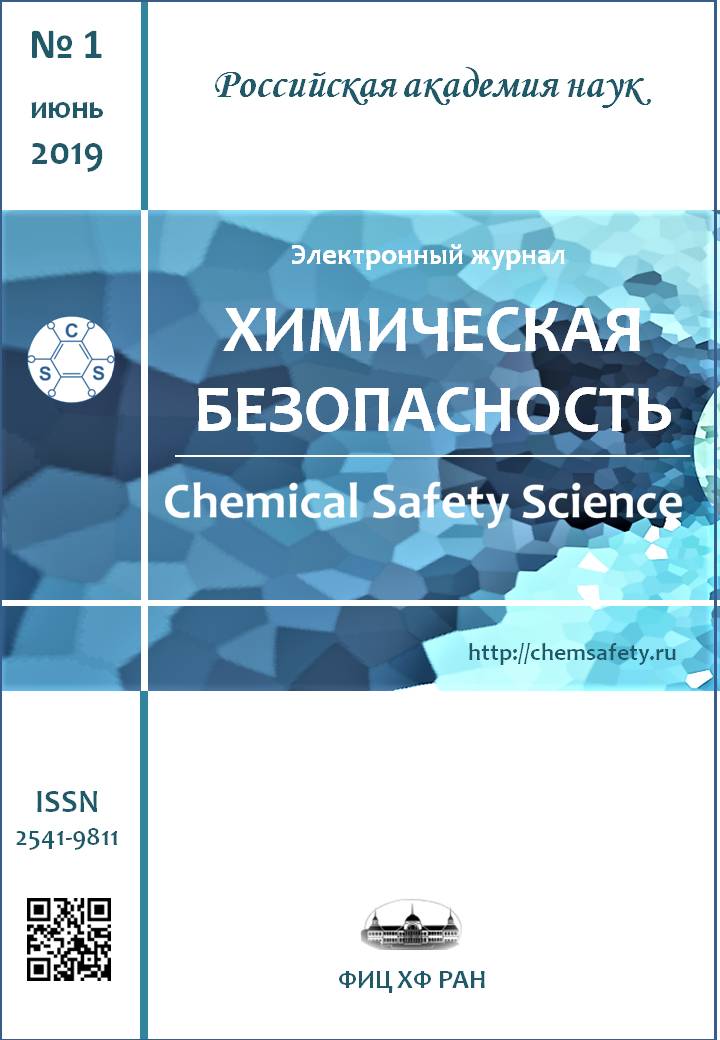MONITORING INVESTIGATIONS OF SON-KUL LAKE (KYRGYZSTAN) POLLUTED BY PESTICIDES
Abstract
The results of environmental monitoring of Son-Kul Lake (Kyrgyzstan), conducted in 2017–2018 by representatives of environmental non-governmental public organizations with the participation of the Kyrgyz Republic state environmental laboratory and international water quality monitoring experts, are presented, which have been giving recommendations for organizing the lake monitoring system. The monitoring was aimed at determining the lake ecological status and further specifying the ways of its sustainable management, including its decontamination from hazardous chemical compounds and solid waste accumulated as a result of pesticide pollution and fishing activities, respectively. The monitoring analyzed the content of a wide range of pesticides in the lake surface water samples, bottom sediments, as well as in fish inhabitants. A series of persistent organic pollutants (POPs), i.e. 4,4’-dichlorodiphenyltrichloroethane (DDT), hexachlorocyclohexane isomers, polychlorinated biphenyls, and other hazardous chemical compounds were found in collected samples. The observed levels of POPs in the bottom sediments and fish samples were within the limited range, while the analysis of water samples showed an exceeding of the maximum permissible concentrations for DDT and hexachlorocyclohexane for fishery waters. The obtained preliminary results show an urgent need to develop a state monitoring program for Son-Kul Lake and to conduct a continuous monitoring on POPs levels.
References
Stockholm Convention on Persistent Organic Pollutants. http://chm.pops.int/Home/tabid/2121/Default.aspx (accessed 20.04.2019).
National Plan on Implementation of Stockholm Convention on Persistent Organic Pollutants by the Kyrgyz Republic. Approved by Decree of the Government of the Kyrgyz Republic of July 3, 2006, No. 371-r [in Russian].
http://eco-expertise.org/ (accessed 05.02.2019).
http://sk.kgz-water.kg/ru/ (accessed 05.02.2019).
http://eco-expertise.org/wp-content/uploads/2009/06/posobie.pdf (accessed 05.02.2019).
Hygienic Standard “Maximum permissible concentrations of chemicals in the water of water bodies of drinking and household water use”. Annex 16 of the Government Decree of the Kyrgyz Republic of April 11, 2016, No. 201 [in Russian].
Hygienic Standard “Maximum permissible concentrations of chemicals in the water of water bodies of drinking and household water use”. Annex 20 of the Government Decree of the Kyrgyz Republic of April 11, 2016, No. 201 [in Russian].
Annex 2 of the Rules for Protection of Surface Waters of the Kyrgyz Republic “Maximum permissible concentrations of regulated substances in water of water bodies used for fishery use”. Approved by the Decree of the Government of the Kyrgyz Republic of March 14, 2016, No. 128 (Amended on December 15, 2017, No. 813) [in Russian].
Hygienic Standard “Maximum permissible concentrations and approximate permissible concentrations of chemicals in soils”. Annex 21 of the Government Decree of the Kyrgyz Republic of April 11, 2016, No. 201 [in Russian].
On approving Hygienic Standard 1.2.3539-18 “Hygienic Standard of pesticide levels in environmental objects (List)”. Decree of the Government of the Russian Federation of May 22, 2018, No. 33 [in Russian].
Technical Regulation on Safety of Fish and Fish Products of the Eurasian Economic Union (EAEU TR 040/2016).
https://youtu.be/mPH9z9F3Kgs (accessed 05.02.2019).
Copyright (c) 2019 O. V. Pechenyuk

This work is licensed under a Creative Commons Attribution-NonCommercial 4.0 International License.












